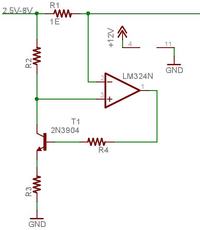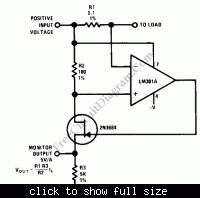hithesh123
Full Member level 6
I don't understand how this opamp current monitor ckt works. I find it difficult to comprehend whenever there is an active element in the op amp feedback loop.
Can someone explain how it works and how does the offset and BJT gain affect the output.
ckt - https://obrazki.elektroda.pl/53_1296445644.jpg
Can someone explain how it works and how does the offset and BJT gain affect the output.
ckt - https://obrazki.elektroda.pl/53_1296445644.jpg

